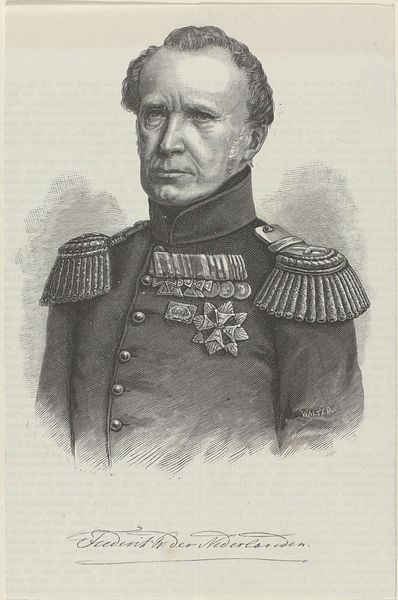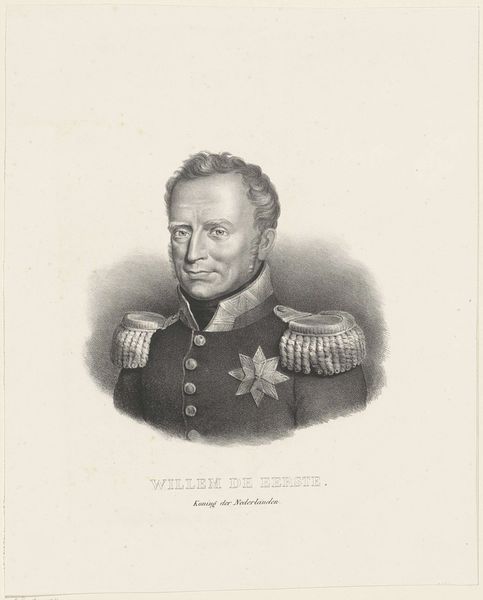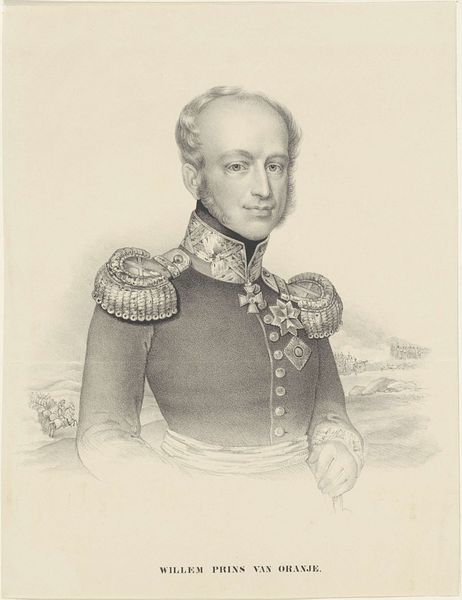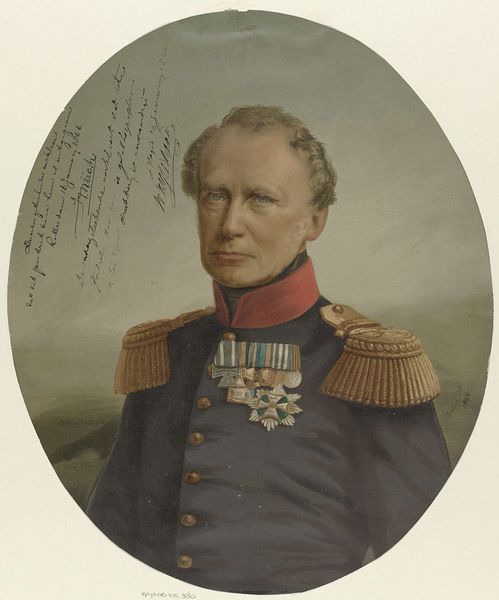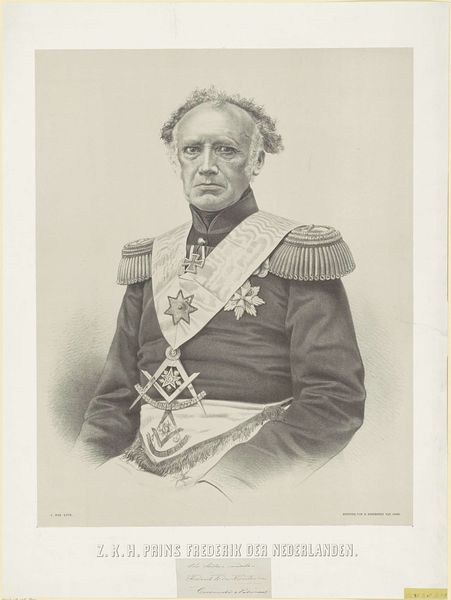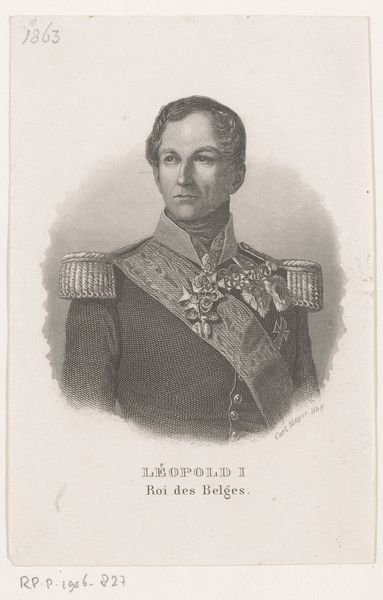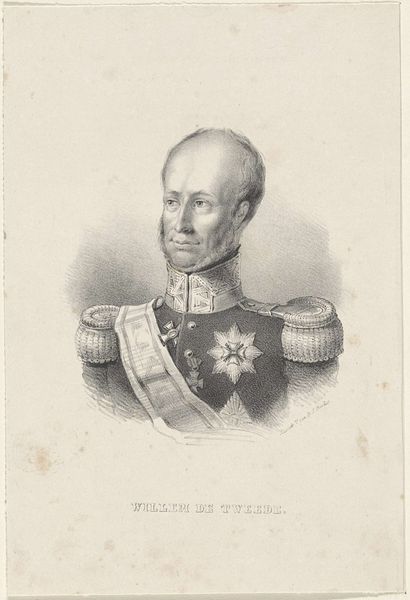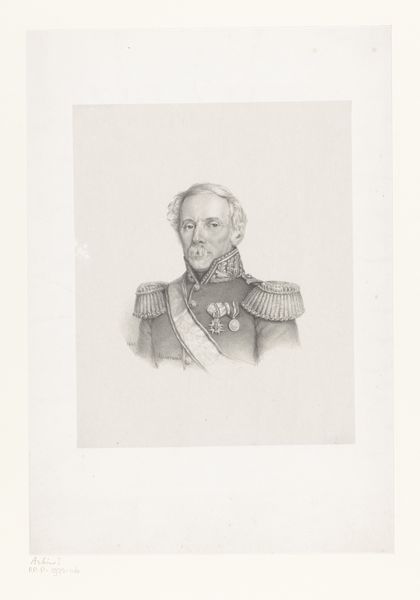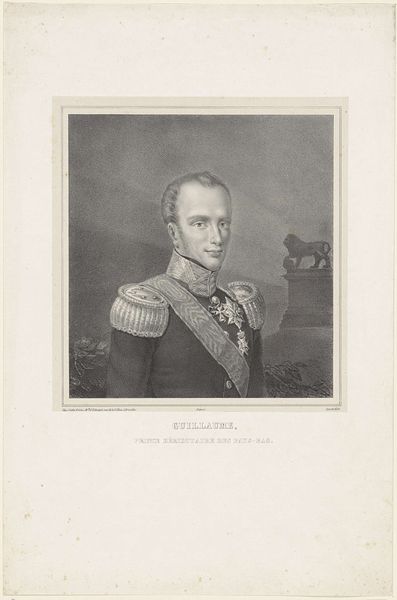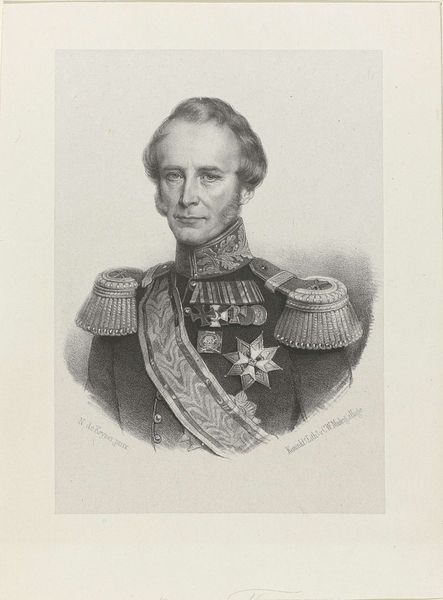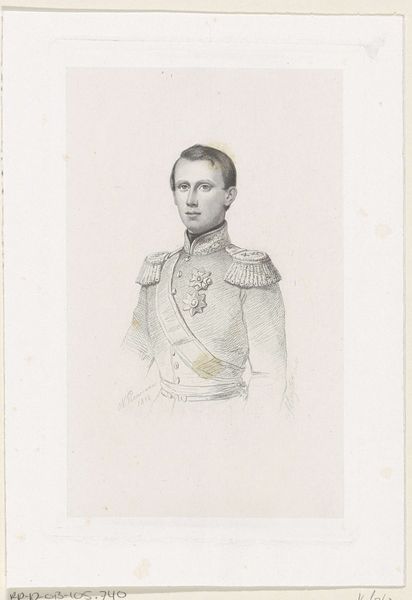
Dimensions: height 278 mm, width 218 mm
Copyright: Rijks Museum: Open Domain
Curator: Here at the Rijksmuseum, we have "Portret van Frederik, prins der Nederlanden," an engraving dating, approximately, from 1881 to 1949. The artist is anonymous. Editor: It possesses such a stern formality, doesn't it? The rigid oval framing, the dark tones punctuated by glints of buttons and metal… Curator: Indeed. Let's examine how the very process of engraving informs our reading. Think of the labor involved – the deliberate carving into the metal plate. The artist's hand is present in every line, etching permanence, a specific representational regime of power, into the print. Editor: Absolutely, the meticulous handwork speaks to the subject’s status but the act of making seems equally as meaningful. Those tight, close lines constructing texture, shadow. He seems almost trapped within the oval! Curator: Consider too the compositional balance. The portrait occupies the majority of the frame, emphasizing Frederik's presence, while the lower register grounds him with the stark text identifying his noble title. A very direct encoding. Editor: It strikes me how much that text influences our understanding of not just the individual portrayed, but the broader societal value of portraiture. These prints existed to reinforce the power dynamics of the era, distributed and consumed as representations of status and authority. And here the subject's actual materials, the specific garments worn as well, display material luxury meant to project influence. Curator: A fascinating consideration. We can thus decode "Portret van Frederik, prins der Nederlanden" as more than a depiction of a single man but rather as an exercise in the reproduction of power and privilege, crafted through deliberate choices in artistic structure and printmaking labor. Editor: So, next time, we should try to remember that artworks are embedded in material means and power structures and we must ask ourselves questions such as “Who benefits from such distribution and consumption of this art”? Curator: A useful point to end on – seeing the materiality behind even seemingly straightforward depictions and its relationship to symbolic forms of representing historical status and importance is essential.
Comments
No comments
Be the first to comment and join the conversation on the ultimate creative platform.
